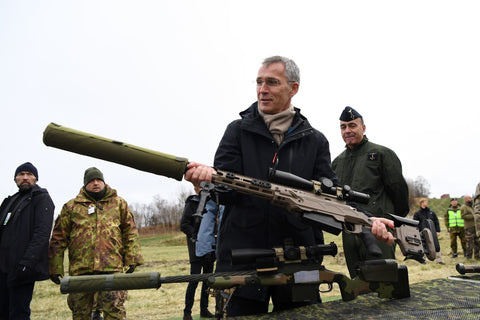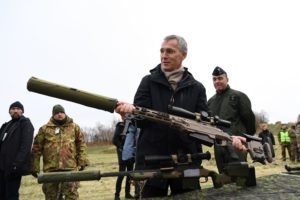
Is the TAC-50 the Most Accurate Sniper Rifle in the World?

The state of the art of sniper rifles and the steel-nerved specialists who use them seems to have reached its physical limits. When an American-produced CheyTac M200 Intervention, boasting an effective range of 1,850 meters, achieved a tight three-round shot group at 2,122 meters, it was declared the most accurate sniper rifle in the world.
That admirable feat had been achieved on the shooting range, not on a battlefield, where situations requiring that extraordinary performance don’t come up often enough to justify a weapon with the cumbersome weight and size, and expense of the M200. For combat, there are a number of sniper rifles that have acquired greater popularity by being quite enough for the job at hand. In the case of the McMillan TAC-50, it has proven more than adequate in real-life (or death) situations.
In the late 1980s McMillan Brothers Rifle Company, later the McMillan Firearms Manufacturers, developed the TAC-50, whose designation referred to the standard .50-caliber 12.7×99 mm Browning machine gun round it fired from a removable five-round box magazine. A rotary bolt-action rifle with dual front locking lugs, the TAC-50 was distinguished by its spiral fluted body and its similarly fluted, 29-inch-long, Lilja-produced barrel, both of which saved weight. It sported a muzzle brake to reduce recoil and its adjustable McMillan-made fiberglass stock was adjustable and the buttstock removable for compact carrying. A bipod was an integral part of the rifle, but it dispensed open sights, strictly necessitating the use of either a telescopic or a night sight.
As a long-range anti-material and sniper rifle, the TAC-50 can penetrate parked aircraft, radar units, trucks as well as taking down personnel. Its effective range is 1,800 meters, but its maximum range has become an envelope for one sniper after another to push. As is, McMillan guarantees the TAC-50 to provide 0.5 minutes of angle groups under ideal conditions.
TAC-50s have been adapted in varying amounts in the armed forces of Canada, France, Georgia, Israel, Jordan, the Philippines, South Africa, Turkey and the United States — including the Sea-Air-Land (SEAL) teams, which count what they call the “Mark 15” among their weapons of choice. It is Canada, however, that has given the TAC-50 its most noteworthy record in actual combat.
The C15, as Canada designates the TAC-50 that it adopted in 2000, was fitted with the Leupold Mark 4 16×40 mm RR/T M1 rifle scope (at McMillan’s endorsement) until recently, when it was replaced by the Schmidt and Bender 5-25×56 PMII telescopic sight. For nocturnal operations, it carries the Night Force NXS 8-32×56 mil-dot night telescope. Issued to Canadian contingents in Iraq and Afghanistan, they attracted international attention during Operation Anaconda in March 2002, when Master Corporal Aaron Ferry of 3rd Battalion, Princess Patricia’s Canadian Light Infantry killed an Afghan militant sniper at a record distance of 2,310 meters (2,526 yards).
In so doing he broke the 2,286-meter (2,500-yard) record set by Marine Carlos N. Hancock II in Vietnam in 1967. About a month after Ferry raised the bar, however, fellow Corporal Bob Furlong, also of 3-PPCLI, exceeded it, felling his opponent at 2,429 meters (2,675 yards).
That record was surpassed in 2009 when British Corporal of Horse Craig Harrison of the Blues and Royals, using an L115A3 sniper rifle, killed an Afghan counterpart at 2,475 meters (2,707 yards). The record stood there until June 2017, when a currently unnamed Canadian member of Joint Task Force 2 in Iraq used a C15 to kill a sniper of the Islamic State at 3,540 meters — or 3,870 yards. Confirmed by video and other data, this extraordinary 2.2-mile shot is unlikely to be repeated in a combat scenario. In any case, of the five farthest ranges at which snipers hit their operational targets, three were by Canadians using the TAC-50.
